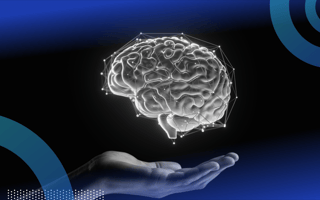Site reliability engineering (SRE) automates IT infrastructure tasks, thus improving the reliability of software applications. Cognitive neuromorphic computing, meanwhile, is a method of computer engineering in which elements of a computer are modeled after systems in the human brain and nervous system.
5 Ways Neuromorphic Systems Enhance SRE
- Better monitoring and anomaly detection
- Faster processing and analysis of data
- Greater levels of automation in incidence response
- Efficiency in energy consumption and processing power
- Parallel processing capabilities that can handle complex tasks more efficiently
When integrated, these two advanced technological fields deliver plenty of benefits: improved performance, effectiveness and reliability of computing systems. Consider cognitive neuromorphic computing’s strengths: Neuromorphic systems excel in pattern recognition, learning and adaptation. They are instrumental in handling unstructured data, making real-time decisions and executing parallel processing tasks. Neuromorphic computing stands to revolutionize SRE and delves into the fascinating integration of brain-inspired computing technologies within SRE.
Cognitive neuromorphic computing mimics the human brain’s structure and functionality and is poised to drastically improve how digital infrastructures self-manage and react to changes.
These cognitive technologies enable systems to process information and respond to incidents in a manner akin to human reflexes — fast, efficient and increasingly intelligent. The bottom line is that neuromorphic computing has the potential to redefine the future of digital system reliability and maintenance.
3 Trends and Technologies Driving Innovation
Several advancements in SRE are improving the ability to maintain reliable, scalable and efficient systems. Understanding these foundational innovations sets the stage for integrating cutting-edge technologies like neuromorphic computing, which promises to elevate SRE practices even further. For example:
Automation, Artificial Intelligence and Machine Learning
Automation tools, AI, and machine learning automate repetitive tasks, predict incidents and provide intelligent incident responses. AI-powered incident management platforms such as Moogsoft and BigPanda rely on ML to correlate events, detect anomalies and reduce alert fatigue.
Improvements in Observability and Monitoring Enhancements
Advances in observability tools have enhanced the ability to monitor complex, distributed systems, relying on metrics, logs and traces to provide richer insights into system health and performance. Tools like Prometheus, Grafana and OpenTelemetry provide real-time monitoring and enable insight into system metrics. Neuromorphic systems can further enhance these capabilities by enabling more intuitive and rapid pattern recognition, potentially identifying issues before they escalate.
Platforms That Define and Manage Infrastructure
Platform tools like Terraform and Ansible allow for version control and automation of infrastructure deployments. Infrastructure as Code (IaC) facilitates the supervision and provisioning of computing infrastructure via machine-readable configuration files rather than interactive configuration tools or physical hardware configuration.
These trends and technological innovations are rapidly and significantly advancing the field of SRE, allowing the building of more resilient, scalable and efficient systems. With these technologies, SRE teams can better manage the complexity of modern cloud-native environments.
4 Challenges to Integration
While the trends discussed earlier pave the way for integrating advanced technologies like neuromorphic systems, this integration comes with its own set of complexities. Here are some examples.
Compatibility With Existing Infrastructure
Neuromorphic systems may require new hardware and software infrastructure that is incompatible with existing systems. This equates to significant financial outlays and disruption to operations throughout the integration process.
Overcoming this challenge requires taking a phased integration approach that steadily introduces neuromorphic components while ensuring backward compatibility. Train employees to work with both traditional and neuromorphic systems to maintain continuity from an operations standpoint.
Large Volumes of Data
Neuromorphic systems also rely on large volumes of high-quality data for training and adaptation. Insufficient or poor data can translate to suboptimal performance and incorrect incident responses.
To overcome this challenge, organizations must put robust data validation and cleansing processes in place. This step ensures that data quality is maintained. Automated tools designed to provide real-time data monitoring and detecting anomalies are useful in identifying and addressing issues quickly and accurately.
Complexity and Unique Expertise
Adopting neuromorphic systems also requires complex algorithms and specialized knowledge. As such, it’s important for organizations to employ and train specialized personnel. These steps will increase the initial implementation cost, but such measures will save time and money in the long run, ensuring smoother implementation.
While these systems are designed for efficiency, scaling them to handle enterprise-level operations can be daunting, especially in a heterogeneous environment, where different systems and technologies are mixed. Organizations must be sure that neuromorphic systems can scale without losing performance or accuracy to deploy them successfully.
Interoperability and Security Concerns
Many organizations have legacy systems that may not integrate easily with new neuromorphic technologies. Careful planning and potentially significant modifications to existing systems can ensure interoperability. From a security standpoint, integrating advanced cognitive capabilities creates vulnerabilities within the organization, particularly with data integrity and system manipulation. Implementing robust security measures to protect neuromorphic systems from cyber threats is critical.
How Neuromorphic Computing Improves SRE
The neuromorphic systems offer many advantages, including enhanced monitoring and anomaly detection. Cognitive neuromorphic systems can improve anomaly detection in SRE by learning to recognize patterns of normal and abnormal system behavior more effectively than traditional systems. This means issues can be detected faster and downtime and mean time to recovery (MTTR) can be reduced.
Neuromorphic systems’ ability to process and analyze data in real time improves SRE practices. This enables faster decision making and automated responses to incidents. It also improves organizations’ ability to achieve greater levels of automation in incident response, subsequently improving system resilience and reducing the need for manual intervention.
Scalability can be a concern when implementing neuromorphic systems. These systems are highly efficient in energy consumption and processing power, which aids scaling operations without a proportional increase in resource usage. This greater efficiency also correlates to more cost savings and an increased ability to handle larger workloads more effectively.
Ultimately, integrating these technologies can lead to significant performance improvements. Neuromorphic computing’s parallel processing capabilities can handle complex tasks more efficiently, resulting in faster response times and better overall system performance.





